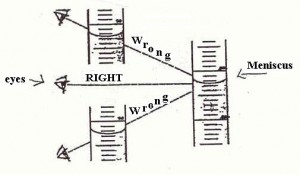(Follows up from here.)
Over at MF’s blog, there has been a continued stream of objections to the recent log reduction of the chi metric in the recent CSI Newsflash thread.
Here is commentator Toronto:
__________
>> ID is qualifying a part of the equation’s terms with subjective observation.
If I do the same to Einstein’s, I might say;
E = MC^2, IF M contains more than 500 electrons,
BUT
E **MIGHT NOT** be equal to MC^2 IF M contains less than 500 electrons
The equation is no longer purely mathematical but subject to other observations and qualifications that are not mathematical at all.
Dembski claims a mathematical evaluation of information is sufficient for his CSI, but in practice, every attempt at CSI I have seen, requires a unique subjective evaluation of the information in the artifact under study.
The determination of CSI becomes a very small amount of math, coupled with an exhausting study and knowledge of the object itself.>>
_____________
A few thoughts in response:
a –> First, let us remind ourselves of the log reduction itself, starting with Dembski’s 2005 chi expression:
χ = – log2[10^120 ·ϕS(T)·P(T|H)] . . . eqn n1
How about this (we are now embarking on an exercise in “open notebook” science):
1 –> 10^120 ~ 2^398
2 –> Following Hartley, we can define Information on a probability metric:
I = – log(p) . . . eqn n2
3 –> So, we can re-present the Chi-metric:
Chi = – log2(2^398 * D2 * p) . . . eqn n3
Chi = Ip – (398 + K2) . . . eqn n4
4 –> That is, the Dembski CSI Chi-metric is a measure of Information for samples from a target zone T on the presumption of a chance-dominated process, beyond a threshold of at least 398 bits, covering 10^120 possibilities.
5 –> Where also, K2 is a further increment to the threshold that naturally peaks at about 100 further bits . . . . As in (using Chi_500 for VJT’s CSI_lite):
Chi_500 = Ip – 500, bits beyond the [solar system resources] threshold . . . eqn n5
Chi_1000 = Ip – 1000, bits beyond the observable cosmos, 125 byte/ 143 ASCII character threshold . . . eqn n6
Chi_1024 = Ip – 1024, bits beyond a 2^10, 128 byte/147 ASCII character version of the threshold in n6, with a config space of 1.80*10^308 possibilities, not 1.07*10^301 . . . eqn n6a . . . .
Using Durston’s Fits from his Table 1, in the Dembski style metric of bits beyond the threshold, and simply setting the threshold at 500 bits:
RecA: 242 AA, 832 fits, Chi: 332 bits beyond
SecY: 342 AA, 688 fits, Chi: 188 bits beyond
Corona S2: 445 AA, 1285 fits, Chi: 785 bits beyond . . . results n7
The two metrics are clearly consistent . . . .one may use the Durston metric as a good measure of the target zone’s actual encoded information content, which Table 1 also conveniently reduces to bits per symbol so we can see how the redundancy affects the information used across the domains of life to achieve a given protein’s function; not just the raw capacity in storage unit bits [= no. of AA’s * 4.32 bits/AA on 20 possibilities, as the chain is not particularly constrained.]
Read More ›


 by being
by being